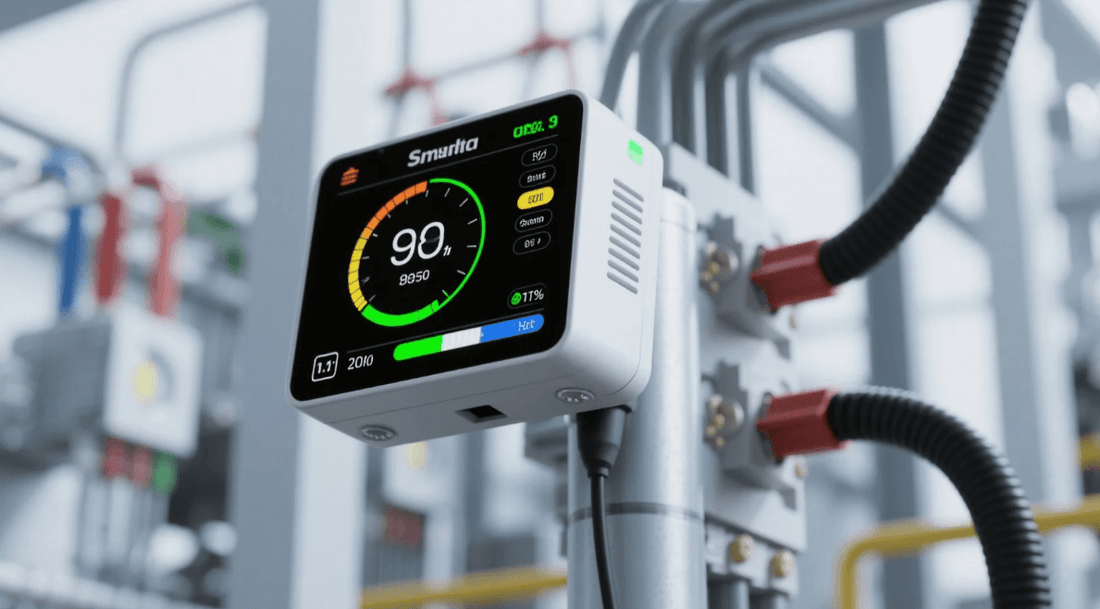
The Rising Importance of the Energy Monitor in the Electrical Industry
Share
In an era where sustainability and cost-efficiency drive operational decisions, the role of the Energy Monitor has evolved from a supporting tool to a strategic necessity. As companies in the electrical sector strive to optimize resource usage and comply with environmental regulations, energy monitoring systems have become essential.
From Manual Meters to Smart Monitoring
Traditional energy metering methods relied heavily on periodic readings and manual analysis. Today, intelligent energy monitors offer real-time analytics, anomaly detection, and automated reporting. These features not only save time but also provide actionable insights.
Core Functions and Features of an Energy Monitor

Real-Time Data Collection and Analysis
Modern Energy Monitors continuously track electricity consumption across multiple circuits and zones. This real-time data is invaluable for identifying peak usage, detecting inefficiencies, and responding to issues instantly.
Integration with Building Management Systems (BMS)
The latest devices support full integration with BMS, enabling seamless control over HVAC, lighting, and machinery. These integrations ensure that energy usage aligns with occupancy and operational demand.
Remote Access and Cloud-Based Dashboards
Many modern monitors feature cloud connectivity, allowing users to view performance metrics from any device. This accessibility facilitates quick decision-making and remote troubleshooting.
Industrial Applications of Energy Monitor Technology
Manufacturing Plants
Factories benefit significantly by monitoring high-load machines and processes. Predictive maintenance and energy optimization become achievable through consistent monitoring.
Commercial Buildings
From office complexes to retail outlets, commercial buildings use monitors to manage energy costs, reduce carbon footprints, and meet green building standards.
Data Centers
Energy usage in data centers is critical. Energy Monitors help balance loads and reduce the risk of overheating or electrical failure, ensuring operational uptime.
Benefits for Electrical Industry Enterprises
Enhanced Efficiency and Reduced Waste
By understanding where and when energy is used, businesses can adjust operations to minimize waste, ultimately lowering costs and emissions.
Regulatory Compliance
Countries around the world are tightening energy usage regulations. Energy monitors provide audit-ready data and help ensure ongoing compliance.
Budget Control and ROI Tracking
Detailed consumption metrics enable better budgeting, while advanced analytics track return on investment for energy-saving initiatives.
Technological Trends Enhancing Energy Monitor Capabilities

AI and Machine Learning Integration
Algorithms learn from energy usage patterns and offer predictive insights, helping prevent equipment failure and suggesting optimization strategies.
IoT and Sensor Expansion
With more connected devices, energy monitors are becoming more granular, tracking consumption down to individual assets or even rooms.
Cybersecurity in Monitoring Systems
As connectivity increases, so do risks. Modern Energy Monitors incorporate encryption, user authentication, and network segmentation to protect sensitive data.
Future Outlook: Energy Monitoring in 2030 and Beyond
Transition to Net Zero
As nations pledge carbon neutrality, Energy Monitors will play a central role in verifying, managing, and reporting energy efficiency programs.
Blockchain for Energy Data Verification
To enhance trust in consumption data, blockchain technologies are being explored to create immutable logs and ensure transparent energy exchanges.
Standardization and Global Protocols
International efforts are underway to standardize data protocols, ensuring that monitoring systems from different vendors can interoperate seamlessly.
Conclusion: A Smart Investment with Sustainable Returns
For electrical enterprises, investing in a modern Energy Monitor system is not only about data—it’s about actionable insights that lead to smarter decisions, lower costs, and environmental responsibility. As energy demand grows, so does the necessity for precise and intelligent monitoring.
FAQs
Q1: Can energy monitors be retrofitted to older equipment?
Yes, many modern systems are designed to integrate with legacy infrastructure using adapters and wireless nodes.
Q2: How often should data from an energy monitor be reviewed?
Real-time monitoring is ideal, but weekly reviews are recommended to identify trends and anomalies.
Q3: Are cloud-based monitors secure for industrial use?
Absolutely. With proper encryption, multi-factor authentication, and regular updates, they offer robust protection.
Q4: Do energy monitors support solar and renewable integration?
Yes, they can track energy input from renewables and help balance grid contributions versus internal use.
Q5: Is it worth investing in an energy monitor for small businesses?
Definitely. Even small-scale monitoring can uncover inefficiencies and improve overall profitability.